-
 Bitcoin
Bitcoin $116400
-0.36% -
 Ethereum
Ethereum $4033
3.40% -
 XRP
XRP $3.302
-1.26% -
 Tether USDt
Tether USDt $1.000
-0.02% -
 BNB
BNB $796.1
1.67% -
 Solana
Solana $177.8
1.89% -
 USDC
USDC $0.9999
0.00% -
 Dogecoin
Dogecoin $0.2314
4.09% -
 TRON
TRON $0.3381
0.14% -
 Cardano
Cardano $0.7989
1.22% -
 Stellar
Stellar $0.4496
-1.84% -
 Chainlink
Chainlink $20.42
9.42% -
 Hyperliquid
Hyperliquid $41.17
0.88% -
 Sui
Sui $3.914
3.77% -
 Bitcoin Cash
Bitcoin Cash $584.7
1.52% -
 Hedera
Hedera $0.2632
-0.54% -
 Avalanche
Avalanche $24.09
3.40% -
 Ethena USDe
Ethena USDe $1.001
-0.02% -
 Litecoin
Litecoin $123.2
1.33% -
 Toncoin
Toncoin $3.318
-0.04% -
 UNUS SED LEO
UNUS SED LEO $8.984
-0.05% -
 Shiba Inu
Shiba Inu $0.00001323
2.85% -
 Uniswap
Uniswap $10.90
4.41% -
 Polkadot
Polkadot $3.999
3.34% -
 Dai
Dai $1.000
0.01% -
 Cronos
Cronos $0.1630
9.64% -
 Bitget Token
Bitget Token $4.484
0.82% -
 Monero
Monero $272.4
2.44% -
 Pepe
Pepe $0.00001173
6.03% -
 Aave
Aave $290.8
2.88%
How long will it take for the MACD to fall after the top divergence? The statistical law of the time window
MACD top divergence signals potential bearish reversal; time window for MACD fall varies, often 5-10 days in major cryptos like Bitcoin and Ethereum.
Jun 03, 2025 at 01:35 am
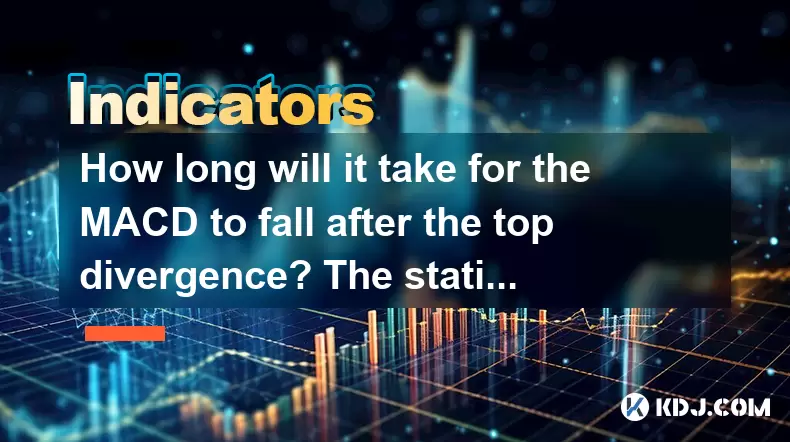
Understanding MACD and Top Divergence
The Moving Average Convergence Divergence (MACD) is a popular momentum indicator used by traders to identify potential buy and sell signals in the cryptocurrency market. MACD is calculated by subtracting the 26-period Exponential Moving Average (EMA) from the 12-period EMA. The result of this calculation is the MACD line. A signal line, which is the 9-period EMA of the MACD line, is then plotted on top of the MACD line. When the MACD line crosses above the signal line, it is considered a bullish signal, and when it crosses below, it is considered bearish.
Top divergence occurs when the price of a cryptocurrency reaches a new high, but the MACD fails to reach a new high, indicating weakening momentum. This divergence can be a warning sign of a potential bearish reversal. Traders often look for this signal to decide when to exit their long positions or enter short positions.
Statistical Law of the Time Window
The concept of a time window in technical analysis refers to the period it takes for a specific event to occur after a certain signal has been identified. In the context of MACD top divergence, the time window is the duration from the point of divergence until the MACD starts to fall. This period can vary significantly depending on market conditions, the specific cryptocurrency being analyzed, and other technical indicators.
Statistical analysis of historical data can provide insights into the average time window for MACD to fall after a top divergence. For instance, studies might show that, on average, the MACD takes about 5 to 10 days to start falling after a top divergence in major cryptocurrencies like Bitcoin. However, these are just averages, and actual time windows can be shorter or longer.
Factors Influencing the Time Window
Several factors can influence the time window for the MACD to fall after a top divergence. Market volatility is a significant factor. In highly volatile markets, the time window might be shorter as price movements are more rapid and exaggerated. Conversely, in less volatile markets, the time window could be longer.
Another factor is the overall trend of the cryptocurrency. If the cryptocurrency is in a strong uptrend, the time window might be longer as the bullish momentum could take longer to dissipate. On the other hand, if the cryptocurrency is in a downtrend or a consolidation phase, the time window might be shorter.
Volume is also an important consideration. High trading volumes can accelerate the impact of a top divergence, leading to a quicker fall in the MACD. Low volumes might delay the effect of the divergence, resulting in a longer time window.
Historical Data and Case Studies
Analyzing historical data and case studies can provide more concrete insights into the time window for the MACD to fall after a top divergence. For example, let's consider a case study of Bitcoin in 2021. In April 2021, Bitcoin reached a high of around $64,000, but the MACD failed to reach a new high, indicating a top divergence. Approximately one week later, the MACD started to fall, and Bitcoin's price began to decline.
Another case study could be Ethereum in 2020. In September 2020, Ethereum's price reached a high of around $480, but the MACD showed a top divergence. About ten days later, the MACD began to fall, and Ethereum's price followed suit. These case studies illustrate that the time window can vary but generally falls within the 5 to 10-day range for major cryptocurrencies.
How to Identify and Use MACD Top Divergence
Identifying MACD top divergence involves a few key steps. Here's how traders can do it:
- Plot the MACD and signal line on a chart. This can be done using most trading platforms and charting software.
- Observe the price action. Look for a situation where the price of the cryptocurrency reaches a new high.
- Check the MACD. If the MACD fails to reach a new high while the price does, a top divergence is present.
- Confirm the divergence. It's important to look for additional confirmation from other technical indicators, such as the Relative Strength Index (RSI) or volume indicators.
Once a top divergence is identified, traders can use it to make informed decisions. For example, if a trader holds a long position in a cryptocurrency and sees a top divergence, they might decide to sell their position to avoid potential losses. Alternatively, a trader might enter a short position to capitalize on the expected price decline.
Practical Application in Trading
Applying the concept of the time window for MACD top divergence in trading requires a systematic approach. Here are some practical steps traders can take:
- Monitor the MACD regularly. This involves keeping an eye on the MACD and signal line on the charts of the cryptocurrencies being traded.
- Set alerts for potential top divergences. Many trading platforms allow users to set alerts for specific conditions, such as when the price reaches a new high but the MACD does not.
- Analyze the time window. Once a top divergence is identified, traders should refer to historical data and their own experience to estimate the likely time window for the MACD to fall.
- Take action based on the time window. If the estimated time window is short, traders might act quickly to exit long positions or enter short positions. If the time window is expected to be longer, traders might wait for additional confirmation before acting.
Frequently Asked Questions
Q: Can the time window for MACD to fall after a top divergence be predicted accurately?
A: While historical data and statistical analysis can provide a general idea of the time window, predicting it accurately is challenging due to the many variables involved. Market conditions, the specific cryptocurrency, and other technical indicators can all influence the actual time window.
Q: Is MACD top divergence a reliable indicator for all cryptocurrencies?
A: MACD top divergence can be a useful indicator for many cryptocurrencies, but its reliability can vary. Major cryptocurrencies like Bitcoin and Ethereum often show more consistent patterns, while smaller or less liquid cryptocurrencies might exhibit more erratic behavior.
Q: How can traders combine MACD top divergence with other indicators for better results?
A: Traders can enhance their analysis by combining MACD top divergence with other indicators such as the RSI, Bollinger Bands, or volume indicators. For example, if the RSI is also showing overbought conditions when a top divergence occurs, it can provide stronger confirmation of a potential bearish reversal.
Q: What are the risks of relying solely on MACD top divergence for trading decisions?
A: Relying solely on MACD top divergence can be risky because it is just one indicator among many. False signals can occur, and market conditions can change rapidly. It's important for traders to use MACD top divergence in conjunction with other forms of analysis and risk management strategies to mitigate these risks.
Disclaimer:info@kdj.com
The information provided is not trading advice. kdj.com does not assume any responsibility for any investments made based on the information provided in this article. Cryptocurrencies are highly volatile and it is highly recommended that you invest with caution after thorough research!
If you believe that the content used on this website infringes your copyright, please contact us immediately (info@kdj.com) and we will delete it promptly.
- SHIB Price, Meme Coin Mania, and the 250x Potential Hunt
- 2025-08-09 16:30:13
- SOL, ETFs, and AI: Crypto's Triple Threat Sensation!
- 2025-08-09 17:10:12
- Tokenized Stock on Solana: SOL Price Reacts to Exodus's Bold Move
- 2025-08-09 17:10:12
- Cardano, Mutuum Finance, Millionaires 2025: A New Wave of Crypto Fortunes?
- 2025-08-09 17:50:12
- Meme Coins on Blockchains in 2025: Hype or the Future?
- 2025-08-09 16:50:11
- World Liberty Financial, Public Listing, and WLFI Tokens: A New York Minute on the Trump-Backed Crypto Venture
- 2025-08-09 16:50:11
Related knowledge

What does it mean when the Triple Moving Average (TRIX) turns downward but the price doesn't fall?
Aug 09,2025 at 12:42pm
Understanding the Triple Moving Average (TRIX) IndicatorThe Triple Moving Average, commonly known as TRIX, is a momentum oscillator designed to filter...

What does it mean when the Williams' oscillator repeatedly hits bottoms but fails to rebound?
Aug 09,2025 at 09:28am
Understanding the Williams %R OscillatorThe Williams %R oscillator, developed by Larry Williams, is a momentum indicator used in technical analysis to...
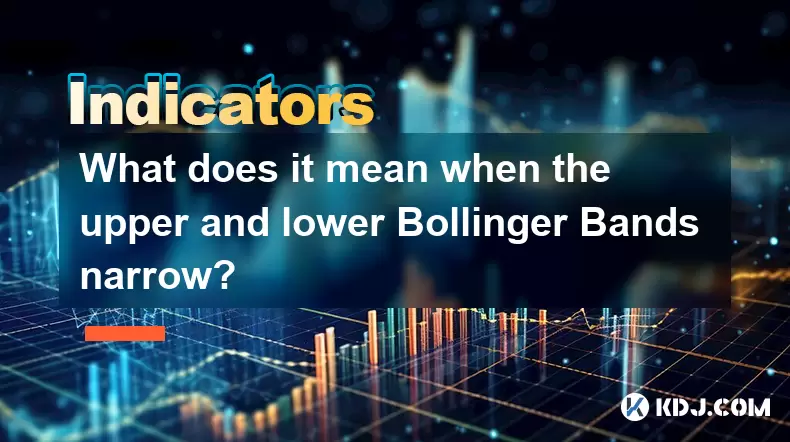
What does it mean when the upper and lower Bollinger Bands narrow?
Aug 09,2025 at 03:00pm
Understanding Bollinger Bands in Cryptocurrency TradingBollinger Bands are a widely used technical analysis tool in the cryptocurrency market, develop...
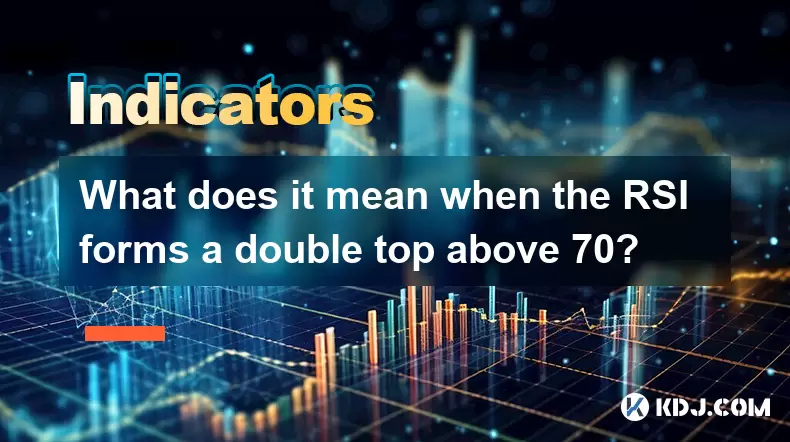
What does it mean when the RSI forms a double top above 70?
Aug 09,2025 at 05:50pm
Understanding the RSI and Overbought ConditionsThe Relative Strength Index (RSI) is a momentum oscillator that measures the speed and change of price ...
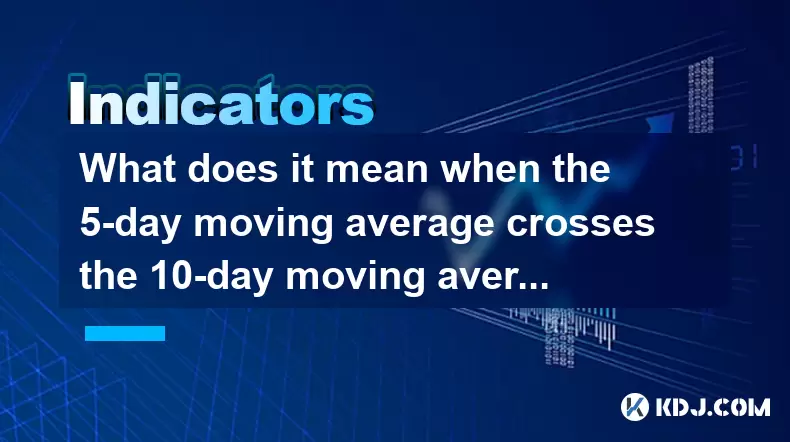
What does it mean when the 5-day moving average crosses the 10-day moving average but the 20-day moving average remains upward?
Aug 09,2025 at 03:35pm
Understanding Moving Averages in Cryptocurrency TradingMoving averages are foundational tools in technical analysis, especially within the cryptocurre...
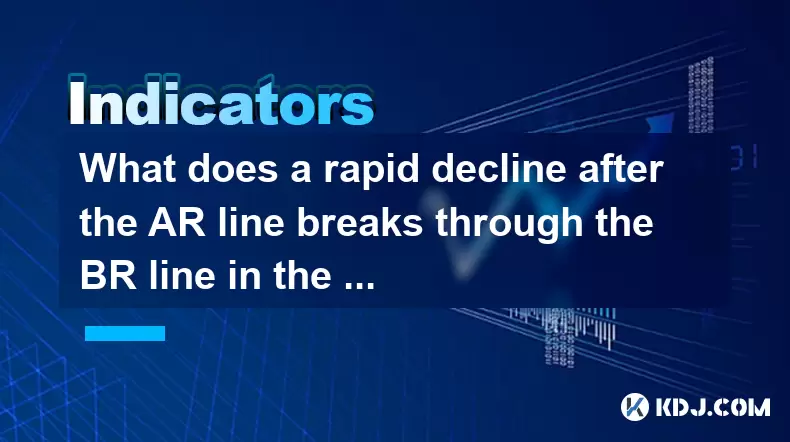
What does a rapid decline after the AR line breaks through the BR line in the ARBR indicator indicate?
Aug 09,2025 at 04:42pm
Understanding the ARBR Indicator ComponentsThe ARBR indicator is a technical analysis tool that combines two oscillators: the AR (Amplitude Ratio) and...

What does it mean when the Triple Moving Average (TRIX) turns downward but the price doesn't fall?
Aug 09,2025 at 12:42pm
Understanding the Triple Moving Average (TRIX) IndicatorThe Triple Moving Average, commonly known as TRIX, is a momentum oscillator designed to filter...

What does it mean when the Williams' oscillator repeatedly hits bottoms but fails to rebound?
Aug 09,2025 at 09:28am
Understanding the Williams %R OscillatorThe Williams %R oscillator, developed by Larry Williams, is a momentum indicator used in technical analysis to...

What does it mean when the upper and lower Bollinger Bands narrow?
Aug 09,2025 at 03:00pm
Understanding Bollinger Bands in Cryptocurrency TradingBollinger Bands are a widely used technical analysis tool in the cryptocurrency market, develop...

What does it mean when the RSI forms a double top above 70?
Aug 09,2025 at 05:50pm
Understanding the RSI and Overbought ConditionsThe Relative Strength Index (RSI) is a momentum oscillator that measures the speed and change of price ...

What does it mean when the 5-day moving average crosses the 10-day moving average but the 20-day moving average remains upward?
Aug 09,2025 at 03:35pm
Understanding Moving Averages in Cryptocurrency TradingMoving averages are foundational tools in technical analysis, especially within the cryptocurre...

What does a rapid decline after the AR line breaks through the BR line in the ARBR indicator indicate?
Aug 09,2025 at 04:42pm
Understanding the ARBR Indicator ComponentsThe ARBR indicator is a technical analysis tool that combines two oscillators: the AR (Amplitude Ratio) and...
See all articles

























































































